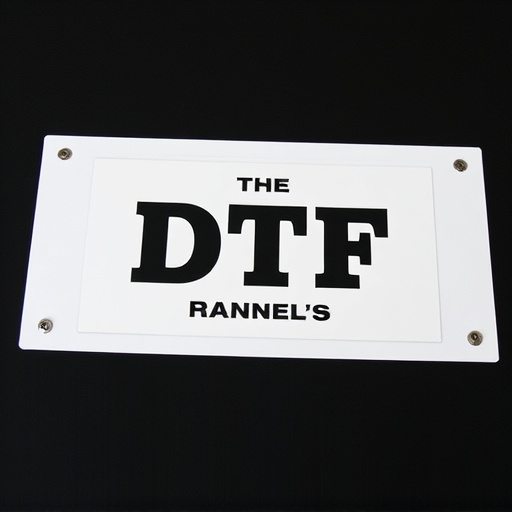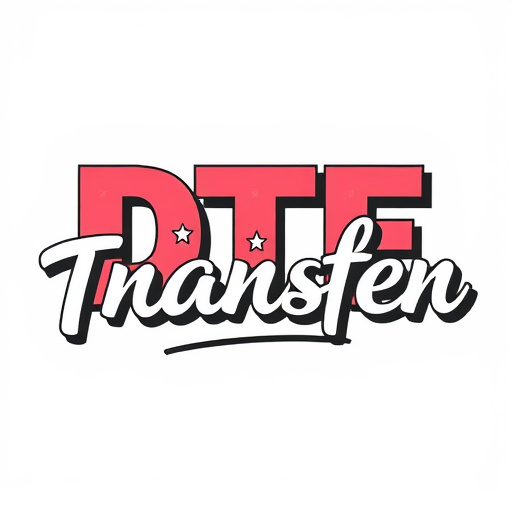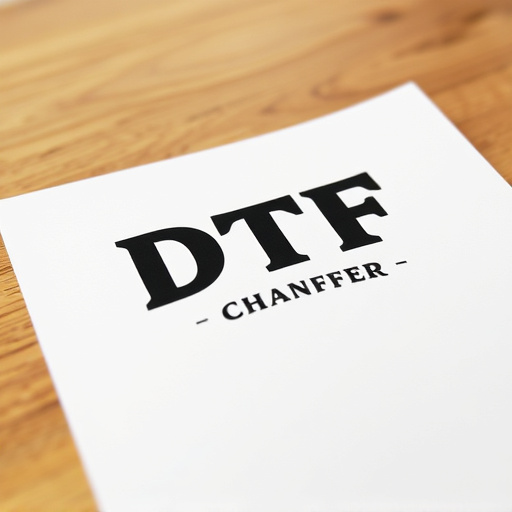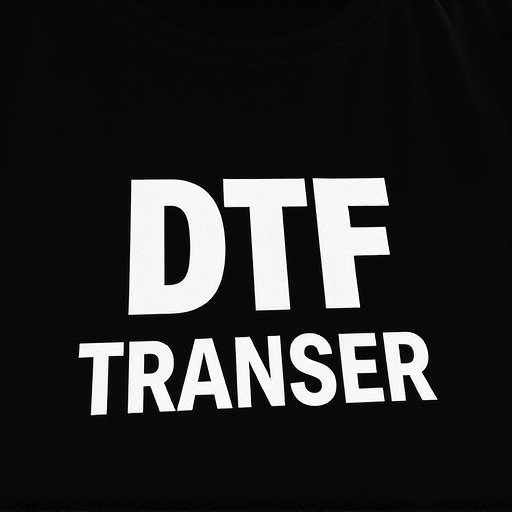Direct-to-Film (DTF) transfers are a cutting-edge technology for precise printing on fabric, offering vibrant, long-lasting results. Heat settings are crucial for optimal DTF transfer quality, ensuring permanent adhesion and colorfastness. A meticulous preparation process involves setting up a clean workspace, gathering essential tools like a heat press machine and DTF films, and following manufacturer guidelines. Applying heat with the correct temperature (130°C – 150°C) and even pressure prevents common errors, leading to superior DTF prints. Customizing heat profiles based on film types enhances consistency and vibrancy.
Looking to master the art of direct-to-film (DTF) transfers? This comprehensive guide is your go-to resource for achieving crisp, long-lasting DTF prints. From understanding the basics of DTF transfers and setting up your workstation, to mastering heat settings and avoiding common mistakes, we’ve got you covered. Discover advanced tips for customizing your heat profile to elevate your DTF transfer game. Optimize your printing process with this essential step-by-step reference – perfect for both beginners and seasoned professionals.
- Understanding Direct-to-Film (DTF) Transfers: A Brief Overview
- Preparing Your Workstation and Materials for DTF Printing
- Heat Settings: The Key to Achieving Crisp and Long-Lasting DTF Prints
- Step-by-Step Guide to Applying Heat for Optimal DTF Transfer
- Common Mistakes to Avoid During the Heat Application Process
- Advanced Tips for Customizing Your DTF Transfer Heat Profile
Understanding Direct-to-Film (DTF) Transfers: A Brief Overview

Direct-to-Film (DTF) Transfers are a cutting-edge method revolutionizing the way we apply artistic and graphic elements to various surfaces, including clothing and textiles. This innovative process allows for precise printing directly onto fabric or other materials using specialized equipment and heat settings. Unlike traditional printing methods that rely on intermediate transfer media, DTF technology enables direct contact between the print head and the final surface, resulting in crisp, vibrant, and long-lasting DTF prints.
With its versatility, DTF Printing has gained popularity among artists, designers, and hobbyists alike. It offers a unique way to create custom designs, personalize items, or even replicate vintage graphics with exceptional accuracy. The heat settings play a crucial role in achieving optimal DTF transfer results, ensuring the design adheres permanently to the substrate while preserving its colorfastness and durability. Understanding these settings is essential for successfully applying DTF transfers and producing high-quality prints.
Preparing Your Workstation and Materials for DTF Printing

Before diving into the application process, preparing your workstation and gathering the right materials is crucial for achieving flawless DTF (Direct-to-Film) transfers. Start by setting up a clean, well-lit workspace equipped with a flat surface suitable for handling graphics. Ensure good ventilation as DTF printing involves working with heat and potentially fragrant transfer films.
Gather essential items like a heat press machine calibrated to the correct temperature range for your DTF transfer, high-quality DTF films compatible with your print medium, and a smooth, non-stick release sheet. Also, have at hand cleaning supplies like isopropyl alcohol pads and microfiber cloths for maintaining equipment and ensuring crisp prints.
Heat Settings: The Key to Achieving Crisp and Long-Lasting DTF Prints

Heat settings play a pivotal role in achieving crisp and long-lasting DTF (Direct-to-Film) prints. The optimal temperature and pressure must be applied to ensure that the transfer film fuses perfectly with the substrate, resulting in vibrant colors and exceptional durability. Getting these settings right is crucial to avoid common issues like bleeding, fuzzing, or poor adhesion.
For best results, start by referring to the manufacturer’s guidelines for specific heat settings tailored to your DTF transfer material and substrate combination. Gradually adjust the temperature and pressure as needed during testing prints, closely examining the quality of the final output. Consistent application of these precise settings will enable you to produce high-quality DTF prints that withstand the test of time.
Step-by-Step Guide to Applying Heat for Optimal DTF Transfer

Applying heat is a crucial step in achieving optimal results when using direct-to-film (DTF) transfers. Here’s a step-by-step guide to ensure success:
1. Preparation: Start by ensuring your workspace is clean and free from dust or debris. Gather all necessary materials, including the DTF film, heat press machine, and a suitable heat-resistant surface. Adjust your heat press machine to the recommended temperature for the specific DTF material you’re using, typically between 130°C – 150°C (266°F – 302°F).
2. Application: Place the DTF film face down on the heat-resistant surface. Carefully align your design or print onto the film, ensuring there are no air bubbles trapped between the film and the substrate. Preheat the substrate—the material you’ll be applying the transfer to—following its manufacturer’s guidelines. Once preheated, place the DTF film onto the substrate and secure it with a heat-resistant cover or press cloth.
Common Mistakes to Avoid During the Heat Application Process

Applying direct-to-film (DTF) transfers can be a precise process, and even small mistakes can impact the final print quality. Here are some common errors to steer clear of during heat application:
One frequent blunder is overestimating or underestimating the heat applied to the DTF transfer. The temperature should always be carefully controlled and adjusted according to the manufacturer’s guidelines. Too much heat can cause the transfer to bubble, wrinkle, or even burn the substrate, while insufficient heat might result in poor adhesion and a poorly transferred image. Another common issue is uneven application of pressure, which can lead to air bubbles, creases, or a lackluster final print. Ensure even pressure is applied across the entire surface during the heating process for optimal results with DTF prints.
Advanced Tips for Customizing Your DTF Transfer Heat Profile
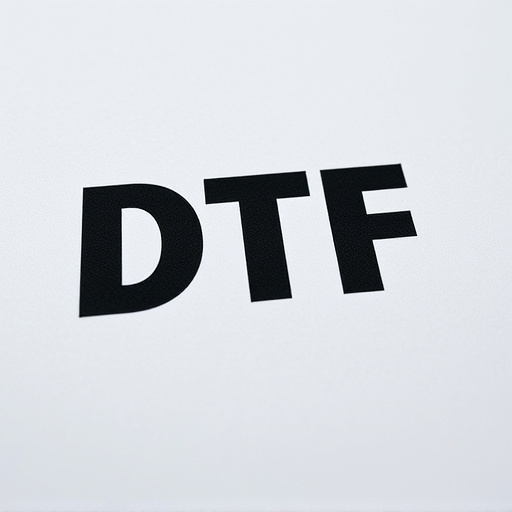
When fine-tuning your heat profile for direct-to-film (DTF) transfers, consider the unique properties of the film and printer being used. Different films have varying levels of heat resistance and adhesion, so adjusting settings accordingly ensures optimal results. Start by referencing established DTF printing guidelines provided by the manufacturer, as they often offer recommended temperature ranges for different materials.
Experiment with heat profile parameters such as temperature, exposure time, and pre-heating duration. Incrementally modify these settings during tests to understand their impact on print quality. Keep detailed notes on your adjustments and observations. Over time, you’ll develop a custom heat profile tailored to your specific DTF transfer needs, offering superior print consistency and vibrancy for each unique film type and printer configuration.





